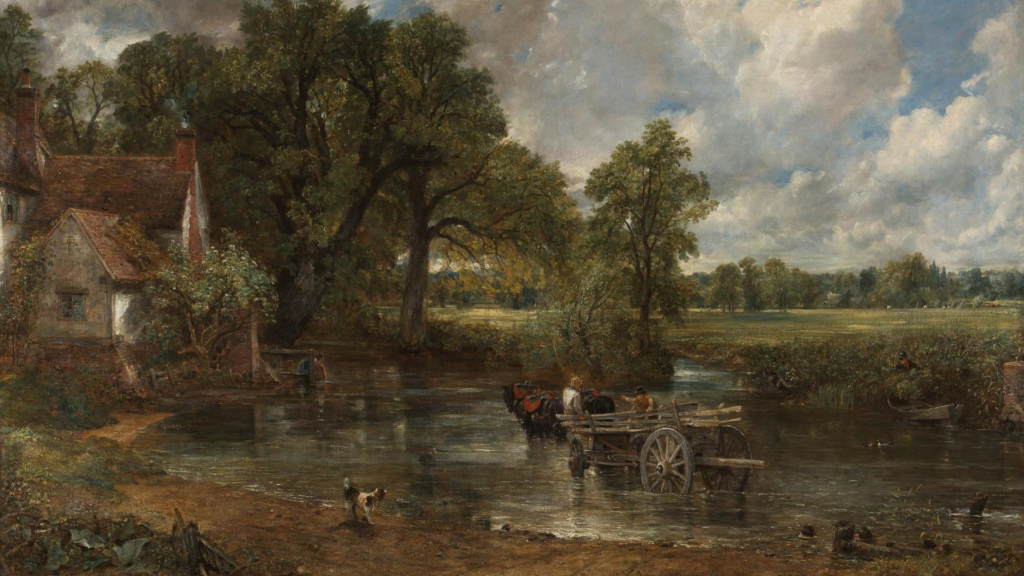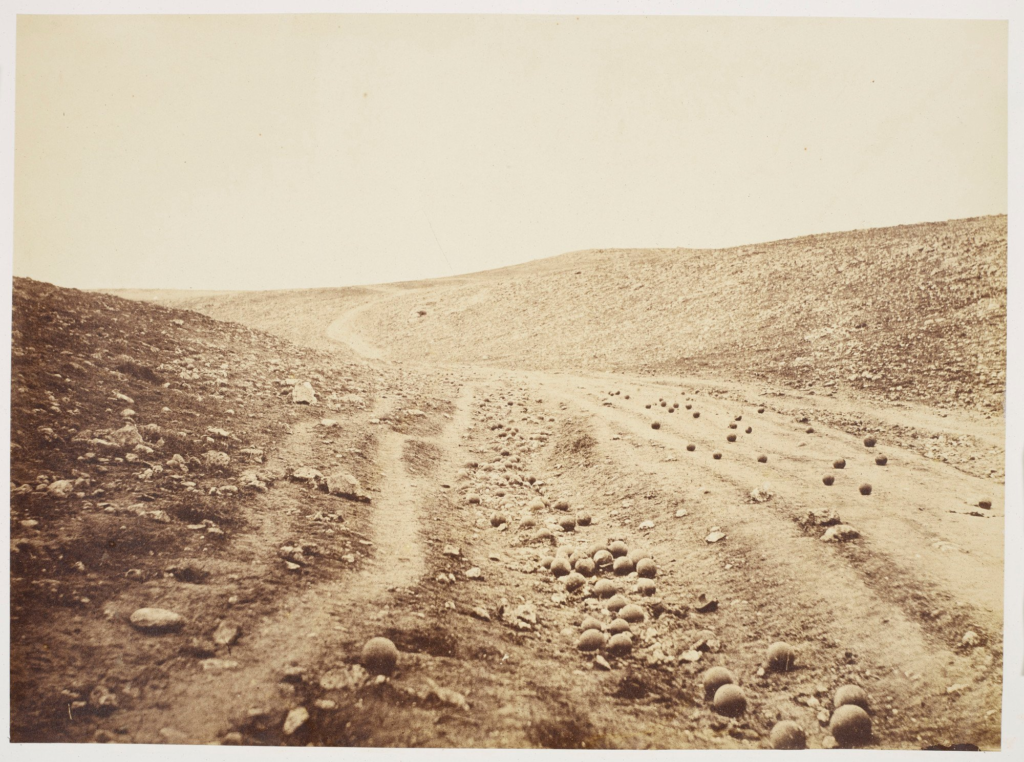Art
John Constable – The Hay Wain 1821

This is a very famous painting which was created by John Constable in 1821. John Constable was one of the first artists of the Romantic movement to create landscape paintings which were directly inspired by nature, rather than idealised depictions. He was also, interestingly, one of the first painters to paint trees green, rather than a yellowish-brown and he was known for his realistic paintings of the sky/clouds. After realising how low landscape art was in the hierarchy of art, John Constable created his ‘6 footers’ in an attempt to put landscape art out there to more people. Altogether, Constable succeeded with this and, as a result, he increased the hierarchy of landscape art. This oil painting was originally titled ‘Noon’ and it depicts a rural landscape near Flatford Mill in Suffolk. John Constable painted this landscape in his London studio on a canvas measuring 130.2cm x 185.4cm canvas. This painting depicts 3 horses which appear to be pulling a large farm wagon across the river and a small cottage to the left named ‘Willy Lott’s Cottage’. Constable’s father owned the Mill nearby and this cottage belonged to a tenant farmer, Willy Lott. The name of this piece being changed to Hay Wain, a hay wagon drawn by horses, suggests that the subject of the photo is in fact the horses pulling the wagon. It is suggested that the horses where stationary in the water in this painting so that the wagon’s wheels could cool down, as well as them, and so they could have a drink of water. What we don’t see in this image is that it was based on the times of the Industrial Revolution, where workers would have been going to work in factories, rather than on farms, leaving the people working on farms having to struggle and work harder, making them suffer in poverty because machinery was taking their jobs. In addition to this, he subject being the wagon in this image may be a way of emphasising the hard work that the lower class had to undergo at the time of the industrial revolution to survive. Finally, this painting was presented to the National Gallery in London by Henry Vaughan in 1866 and it has been there ever since.
Photography
Roger Fenton
Roger Fenton was a War Photographer and previous lawyer who was known for staging his photographs, manipulating the truth. For example, this image, ‘Valley of the Shadow of Death’:

This image displays cannon balls on a road which are believed to have been placed there, perhaps between exposures.

This is another image by Roger Fenton, much different to my previous example. This image features the location in which the painter Samuel Palmer had been inspired by the natural beauty of this river valley. As a result, this indicates that Fenton was also inspired by nature and romanticism when taking this image in Wales. By looking at this photograph, it is clear that Roger Fenton wanted to emphasise the beauty of subject matter, tonality and composition of this image, rather than document the reality. Finally, it looks as if this image had been taken using a slow shutter speed to show the movement of the water. This can be seen by what looks like white haze amongst the water which makes the picture look heavenly.
Fernando Maselli

Fernando Maselli is a Photographer, based in Madrid, who is inspired by Edmund Burke’s romantic conception of the sublime and its connection to nature. Maselli creates montages of mountains to make one extraordinary landscape from various existing landscapes that will produce concepts of the Sublime. Maselli takes photographs of mountains at different times throughout the day and at different angles then used fragments, cuts, repetitions and overlaps to build the artificial landscapes. He is fortunate to have trained as a climber to make his photographs possible.
Fernando Maselli stated ‘I seek to recreate an imaginary landscape, almost perfect, where the repetition and accumulation of the elements creates in the viewer a disturbing sensation.‘ This shows that the aim of his photographs are to represent the Sublime.
